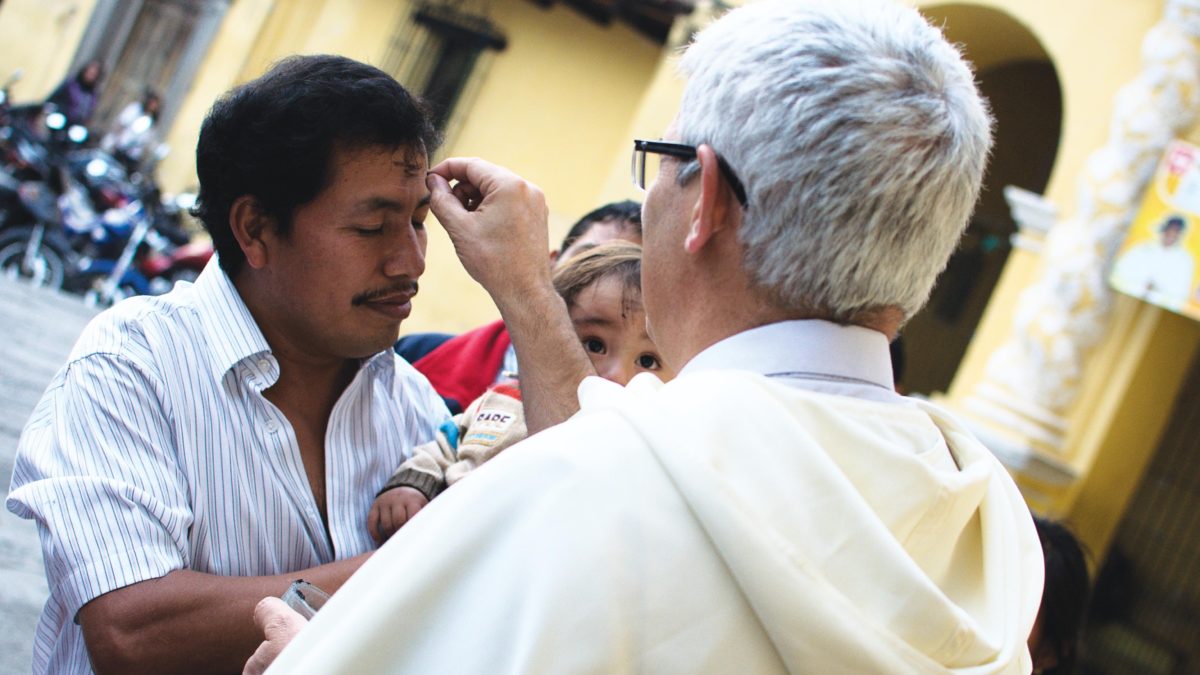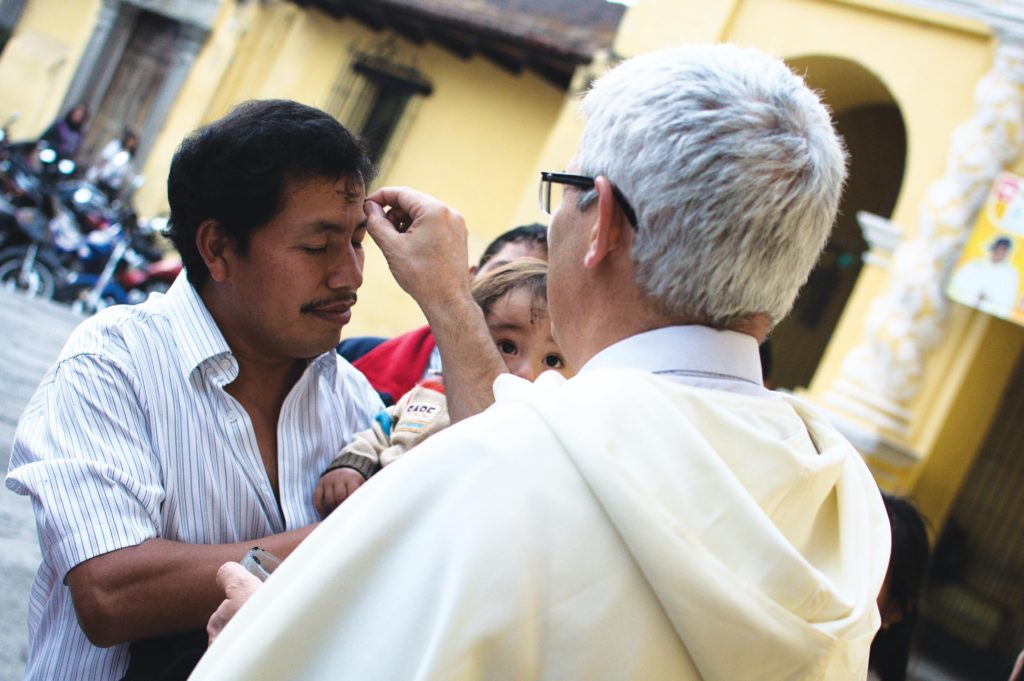When is Ash Wednesday?
Ash Wednesday is the first day of Lent and occurs 46 days before Easter. In almost all Catholic churches around Guatemala, Ash Wednesday (Miércoles de Ceniza) is celebrated. For many Christian traditions, this day marks the beginning of Lent, the period of 40 days of preparation to relive the passion, death, and resurrection of Jesus.
Meaning of the Ashes
Ash (ceniza in Spanish, from the Latin cinis) is quite symbolic. As the result of an object’s combustion by fire, it symbolizes human frailty and teaches lessons about testing and faith. The ash that is used on Ash Wednesday comes from burning the palm fronds that were used the previous year to celebrate Palm Sunday. Devout families store these palm branches through the year and then take them to the church a few days before the celebration.
After the homily, the priest blesses the ashes and sprinkles them with holy water. He then proceeds to use the ash to mark a cross on the forehead of each of the faithful, saying either of these two sentences: “Repent and believe in the Gospel,” or “Dust you are and to dust shall you return.”
It’s said that in times past, Jews would cover themselves with ashes as a sign of sacrifice. It’s also said that during the first centuries of the Christian church, those who were willing to convert wore penitential habits and put ashes on their heads. In the 9th and 10th centuries, bishops imposed sackcloth and ashes on penitents. It was in the 11th century that the Roman Catholic Church extended this use beyond being only for penitents to being for the entire community.
The marking of the cross on the forehead with ashes is both an ecclesial act and an act of faith. It takes place within a communal celebration, and it also marks the beginning of a season of private faith and its public display.
Ash Wednesday in Antigua Antigua Guatemala
Living in Antigua, on Ash Wednesday, you see so many people both young and old with the sign of the cross on their foreheads whether at school, at work or at leisure. Of course, you know who are observant Catholics, those who are not and those of other religions! In Antigua Guatemala, Lent an and Easter is a great time time to visit. After Seville in Spain, Antigua Guatemala has the most celebrations in all the world!




